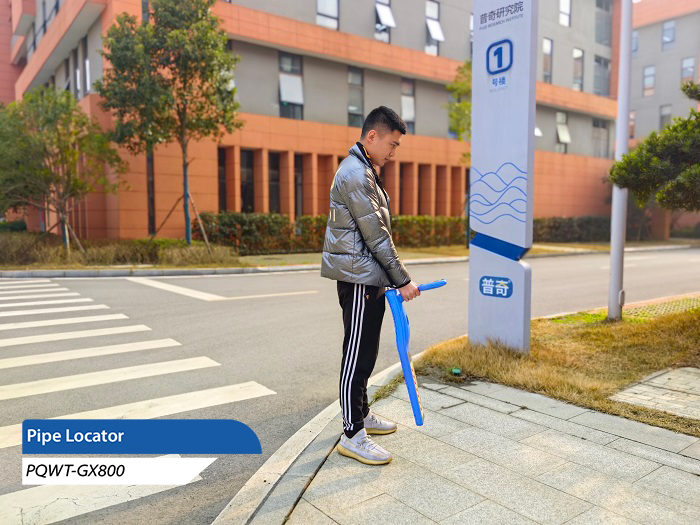Pipe Locator is an indispensable tool in urban planning, construction and maintenance. It can quickly and accurately locate and measure the position and depth of underground pipelines, providing a reliable basis for decision-making. This article will introduce the technical principle, application, advantages and disadvantages of Pipe Locator.

I. Technical Principle
Pipe Locator mainly utilizes electromagnetic induction and radar detection two technical principles.
1. Electromagnetic induction principle: Pipe Locator applies a special frequency signal current to the measured pipeline through the transmitter, thus generating a magnetic field in the pipeline. The receiver has a built-in induction coil that receives the magnetic field signal from the pipe, which generates an induced current to calculate the pipe's direction and path. Generally there are three reception modes: peak mode (maximum value), valley mode (minimum value), and wide-peak mode.
2. Principle of radar detection: Radar detection is a method of using electromagnetic waves to detect underground pipelines of all materials. It transmits high-frequency electromagnetic waves, which are reflected and propagated by underground pipelines, and the receiver receives the reflected electromagnetic wave signals, so as to determine the location and depth of underground pipelines.
Application
Pipe Locator is widely used in urban planning, construction, maintenance and emergency rescue and other fields. Specific applications are as follows:
1. Urban planning: In the stage of urban planning, Pipe Locator can help planners understand the distribution and direction of underground pipelines to avoid pipeline damage caused by construction errors.
2. Engineering construction: In the process of engineering construction, Pipe Locator can locate and measure the position and depth of pipelines to provide accurate data support for construction.
3. City maintenance: City maintenance personnel can use Pipe Locator to find faults of underground pipelines and improve maintenance efficiency.
4. Emergency rescue: In the event of an emergency, Pipe Locator can help emergency personnel to quickly locate the position of the pipeline to provide support for emergency repair work.
Advantages and disadvantages
Pipe Locator has the following advantages and disadvantages:
1. Advantages:
(1) Simple operation: Pipe Locator is simple in structure, convenient in operation and easy to carry.
(2) Accurate positioning: Pipe Locator can quickly and accurately locate the position and depth of underground pipelines and improve work efficiency.
(3)Wide application: Pipe Locator is not only suitable for metal pipelines, but also for non-metallic pipelines and other buried objects.
(4) Strong adaptability: Pipe Locator is able to work in different terrain and climate conditions, with strong adaptability.
1.Disadvantages:
(1) on the operator quality requirements: the use of Pipe Locator need to have certain professional knowledge and skills, the operator quality requirements are high.
(2) Higher requirements for the environment: radar detection methods have higher requirements for the environment, in complex terrain and interference in the environment, the ability to measure depth is poor.
(3) Higher cost: The price of Pipe Locator is relatively high, for some small units, the investment cost may be higher.
In conclusion, Pipe Locator is an indispensable tool in urban planning, construction and maintenance. In the process of using it, it is necessary to combine the actual situation to choose the appropriate detection method and technical parameters to improve the efficiency and quality of work. At the same time, it is also necessary to strengthen the operator's skills training and management to ensure that the Pipe Locator can maximize its role and application value.








